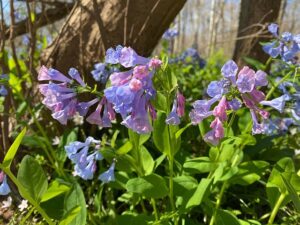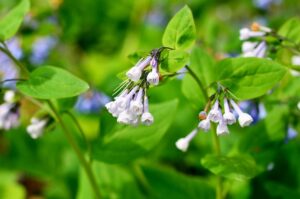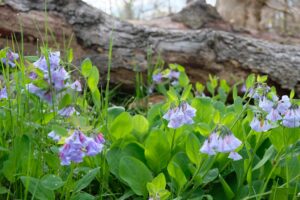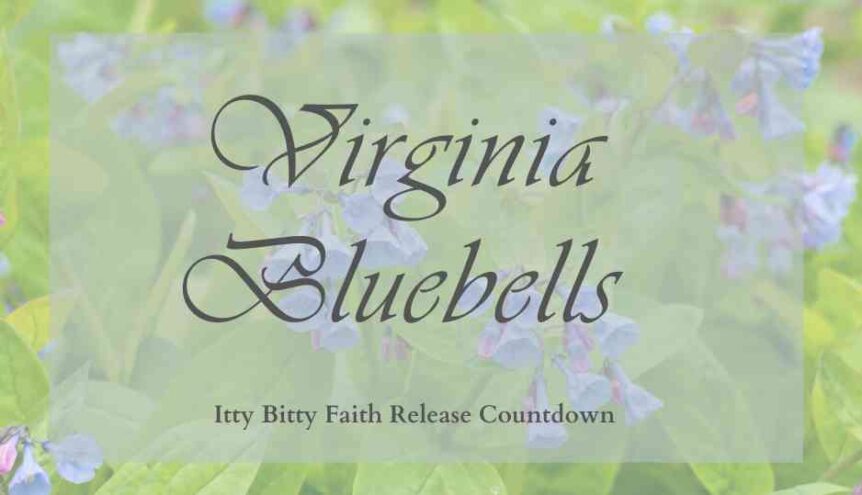 Why would a Tennessee girl write about a Virginia plant? Two reasons—unlike the others I’m highlighting, this one does well in full sun, but does even better in partial shade—or does “dappled light” sound writerlier? These garden perennials also bloom early in the spring, so you get some color alongside daffodils, hosta, Solomon’s Seal, and ferns. But their blooms are considered “ephereal” since they don’t last long. By full summer, they’re completely gone. In the wild, it’s hard to know when you’ll see them, which is one reason homegrown varieties make sense. Just like irises, they grow from rhizomes, so you can divide and replant throughout your yard, too.
Why would a Tennessee girl write about a Virginia plant? Two reasons—unlike the others I’m highlighting, this one does well in full sun, but does even better in partial shade—or does “dappled light” sound writerlier? These garden perennials also bloom early in the spring, so you get some color alongside daffodils, hosta, Solomon’s Seal, and ferns. But their blooms are considered “ephereal” since they don’t last long. By full summer, they’re completely gone. In the wild, it’s hard to know when you’ll see them, which is one reason homegrown varieties make sense. Just like irises, they grow from rhizomes, so you can divide and replant throughout your yard, too.
If you’re guessing that the Virginia bluebell was so named due to its original location, you’d be partially correct. The scientific name for them is Mertensia virginica because they were first documented in Virginia (see the next paragraph for more on that). Bluebells come from both the blue color of the blooms, and their shape—bells. Bluebells were named the first wildflower of the year by the Virginia Native Plant Society in 1989—hence the name Virginia bluebells. So, just as the cornflower is Tennessee’s state wildflower, the Virginia bluebell is Virginia’s.
So, back to the first documentation of these wildflowers. Thomas Jefferson—the second president of the United States—began keeping a garden diary (at the ripe old age of 23) which he called his Garden Book. On April 16, 1766, in one of his earliest observations in this book, he noted “a bluish colored, funnel-formed flower in the lowgrounds in bloom.” Of course, Jeffersons’ historic home, Monticello, is in Charlottesville, Virginia. Just a little U.S. history to go along with today’s plant.
 Believe it or not, not all bluebells are actually blue (some plants produce pink or white blooms), and none of them start out that way. They start as a pink or purplish-pink hue before changing to the blue color they’re famous for, and they return to a more pinkish hue after pollination.
Believe it or not, not all bluebells are actually blue (some plants produce pink or white blooms), and none of them start out that way. They start as a pink or purplish-pink hue before changing to the blue color they’re famous for, and they return to a more pinkish hue after pollination.
Here is a little tidbit I didn’t know: Blue is a rare color in nature, which includes wildflowers. According to the Lewis Ginter Botanical Garden, only about 10 percent of the more than 280,000 flowering plants worldwide produce blue blooms. That alone might make it worth putting in your garden.
Other names Virginia bluebells are known for is gentlemen’s breeches and old ladies’ bonnets because they are similar in appearance to these old-fashioned apparel items. They’ve also been called eastern bluebells, Virginia cowslip, and lungwort oysterleaf—lungwort because they look a little like a lung and oysterleaf because those who have been brave enough (or crazy enough) to eat their cooked leaves say they taste like oysters.
 The Virginia bluebell is rivaled in the United States for its popularity by another beloved blue wildflower—bluebonnets, which are a springtime attraction in and around Texas.
The Virginia bluebell is rivaled in the United States for its popularity by another beloved blue wildflower—bluebonnets, which are a springtime attraction in and around Texas.
You may not be able to purchase these beauties on Amazon, but be sure to enter here for a chance to win a $25 Gift Card anyway. Maybe you can use them for gardening tools, or seeds, or a book!






